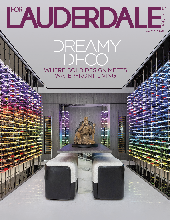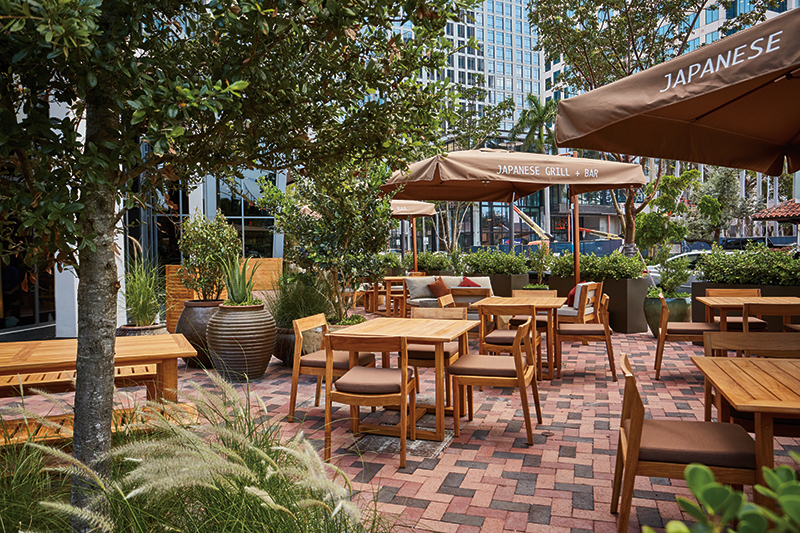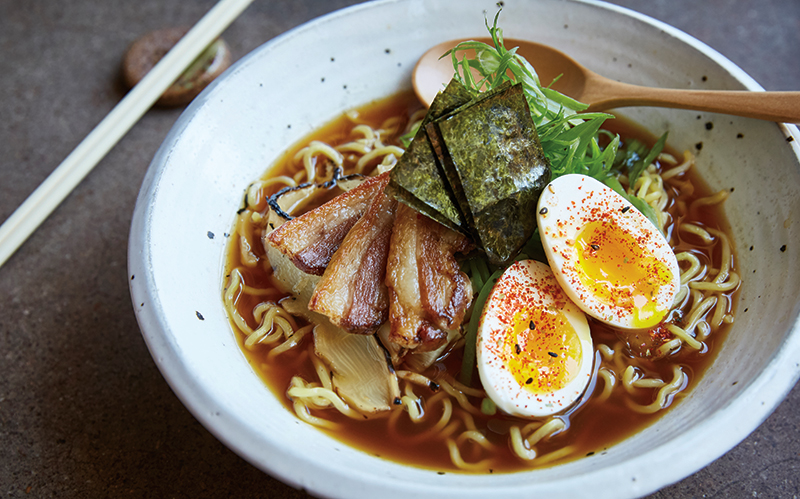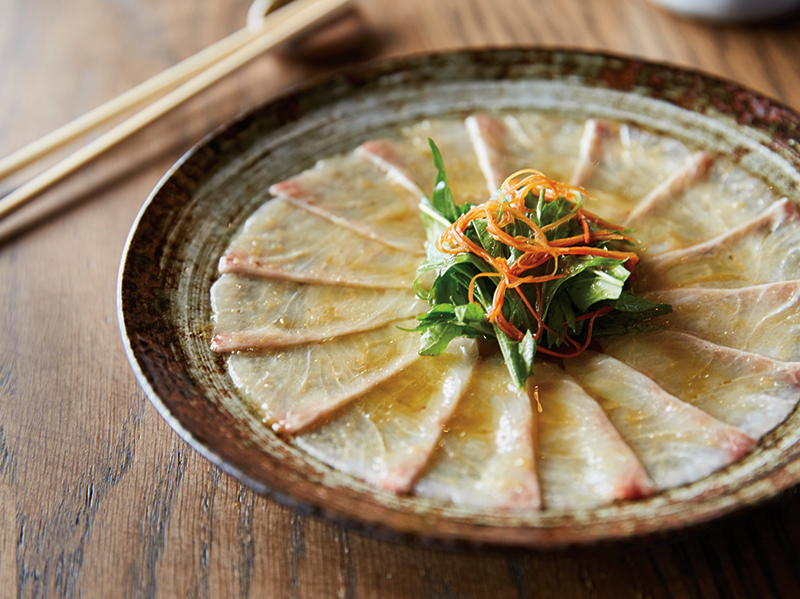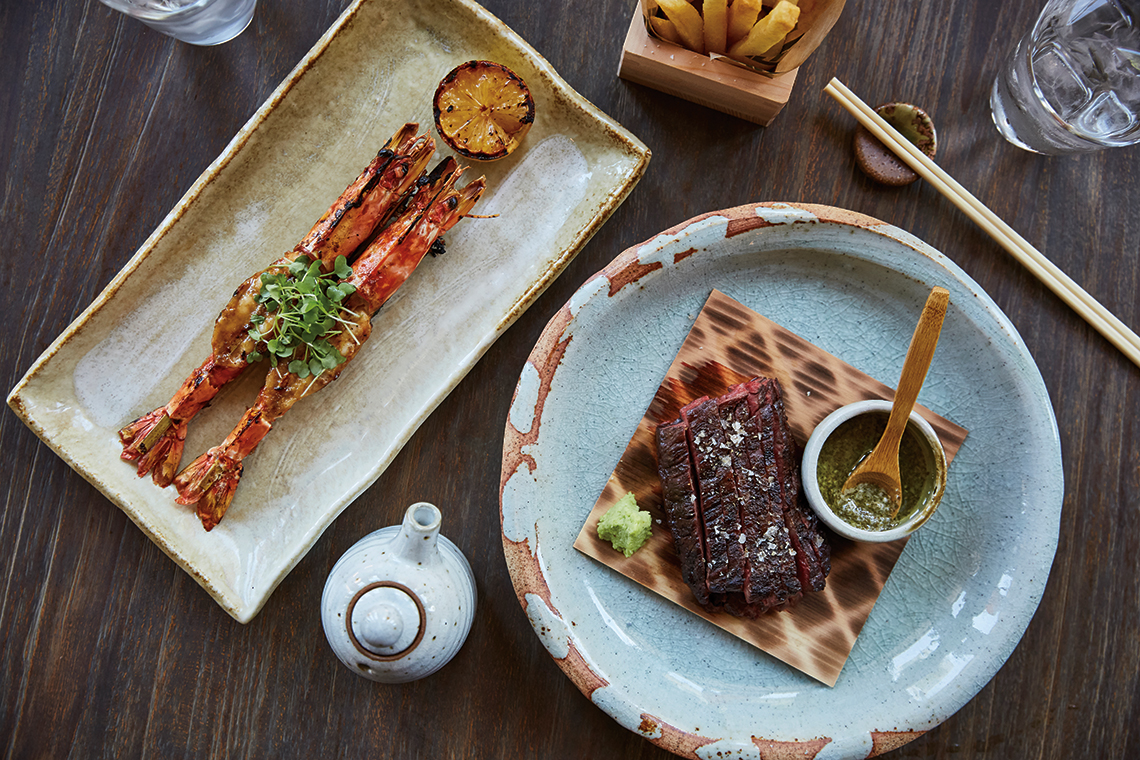
Chef Luca Spiga wanted to try something different.
He was living in London, where he’d moved from his home village on the Italian Mediterranean island of Sardinia. Since moving to London, he’d worked in high-end Italian kitchens and briefly in French haute cuisine. But he wanted to expand his knowledge base further, and Japanese cuisine seemed like a great way to do that.
He expected Japanese food to challenge him. He expected it to be exotic. To be a bit bewildering at first.
He didn’t expect it to remind him so much of home.
“In the beginning, I see straightaway the simplicity,” says the man who today leads the kitchen at Las Olas Japanese restaurant Etaru. After almost a year in a Michelin-starred French restaurant that was brilliant but not for him, he found himself in a popular London Japanese place called Roka – and in a food culture where three ingredients can make something amazing. It felt familiar.
“In Italy, we take a beautiful ripe tomato and put some olive oil and pepper. It’s three ingredients.” Now he watched chefs taking fish, soy and wasabi – “three ingredients that make something ‘wow.’
“This is something which I didn’t expect, but I was absorbed by all this energy.”
Food cultures, he says, begin with simplicity. “Now in this time, people want the simplicity which is where we start everything.”
The other big similarity he noticed was in the concept of shared plates. He was used to the more standard restaurant method: All starters go out together, all main courses go out together, everybody gets what they ordered. But at Roka and now Etaru, dishes head out when they’re ready. They’re placed in the middle of the table with the idea being that there’s food here for all.
Spiga admits he didn’t get that at first. But then the similarities began to strike him – this was like his family table back home in Sardinia. His father, two brothers and mother – this is how they ate. Pasta, a simple salad, fish, a side dish, all goes into the middle of the table. In Japanese as in Italian culture, family was tremendously valued, and this informed mealtimes.
Of course, in a high-end restaurant it can be a way of doing things that requires education.
“It’s a little bit of challenge for us, the way we do the service and serve the food,” Spiga says. “But we believe in time, we can put our identity out there: ‘Here is who we are and this is what we are doing.’ It’s just a matter of education. [Patrons] are used to eating an entrée each and used to eating all at the same time because for the last 30 years they’ve been doing that. It’s just a matter of time before they realize it’s a good way to eat – sharing and tasting a new item.”
These days, Spiga does his cooking and educating on Las Olas. After a number of years at Roka, the restaurant’s parent company approached Spiga about running the kitchen at a new restaurant in Florida. That’s how he arrived on Las Olas at Etaru, which opened last summer. (The group already had a presence in South Florida thanks to another Etaru in Hallandale Beach and Zuma, a Japanese restaurant in Miami.)
Spiga had good timing for that first move into Japanese cuisine in London. “It was kind of a boom of Japanese cuisine,” he says of the early part of the decade. But it’s less transient, market-fickle details that have kept him with this group.
“After seven years with the company, I am still here,” he says. “There is still so much to learn, and the company gives you so much room to grow. If you have the same menu for years, at one point it gets – not bored, but what is the next step? What are we working on?”
It’s not a problem he faces now.
“Seven years [in Japanese cuisine] and I still feel like there’s a lot to do.”
The Dish: Black Kampachi Sashimi
Ingredients
- Cobia, sliced thinly
- Mizuna salad with pickled carrots and sweet potatoes
Sauce
- Olive oil
- Truffle oil
- Soya sauce
- Grated garlic
- Ponzu sauce
Method
Mix all together and top fish and salad with the sauce.
